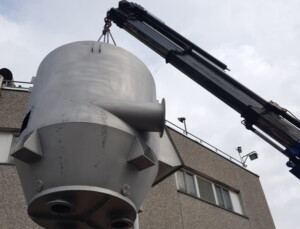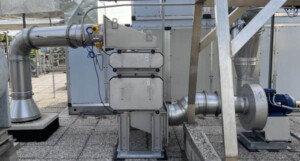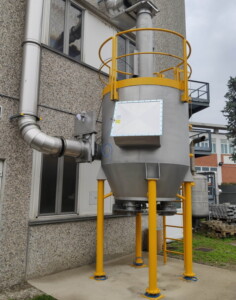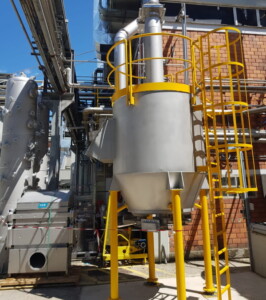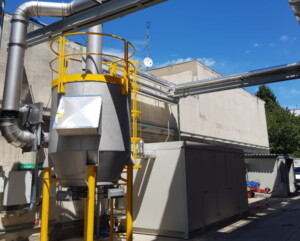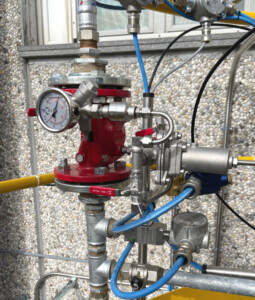How to reduce VOCs air pollution from pharmaceutical industry
How to reduce VOCs air pollution from pharmaceutical industry? Design and installation of three ATEX plants for the treatment of Volatile Organics Compounds in the pharmaceutical industry
This Case Study refers to a company that is part of a major American pharmaceutical industry group that produces pharmaceutical and biotechnological specialities.
This kind of production needs the use of reactors in which chemical reactions between different components, used for the drugs production, take place. A number of dangerous substances are used in the production of drugs.
Manual loading operations of equipment such as reactors involve the emission of these dangerous substances and hazardous chemicals that disperse in the work environment.
The Italian headquarters has three production units where pollutants aspiration systems have already been installed, but no abatement system was in use. This has been a problem for many years, that’s why the Italian headquarters have asked for Tecnosida® to help solve the problem.
Reactors loading operations can cause VOCs emissions
After having been contacted by the client, Tecnosida’s® specialists made specific on-site inspections in order to evaluate the situation and offer them the best solution. Therefore, they considered the necessity of the treatment of the VOCs emitted during manual loading operations of the reactors, taking into consideration that the factory’s indoors are classified as ATEX 2 area.
Thus, Tecnosida® has designed and created three ATEX abatement systems, one for each production area. The three plants share the same operating principle and the same structure. However, the components of each one have been adapted considering the characteristics of each area and the capacities of their airflows. Below you can discover how they have been designed!
Dust filtration to protect activated carbon filter for VOCs absorption
In each plant, the airflow sucked by the reactors passes through the piping located on the roof to be then conveyed in the canister installed before the fan. The canister is a safety container which includes filtering elements and it is used for the treatment of contaminants substances that can be dangerous for operators’ health. Thus, inside the canister there are barrier bags which allow the filters to be front inserted and extracted, in order to avoid the dispersion of dangerous dust in the environment.
More specifically, each canister has a pre-filter and a HEPA filter. Their use is essential to avoid that dangerous dust in the flow goes in the activated carbon purifiers, so as to inhibit the adsorption procedure.
Activated carbon filter to reduce VOCs, a source of pharmaceutical industry pollution
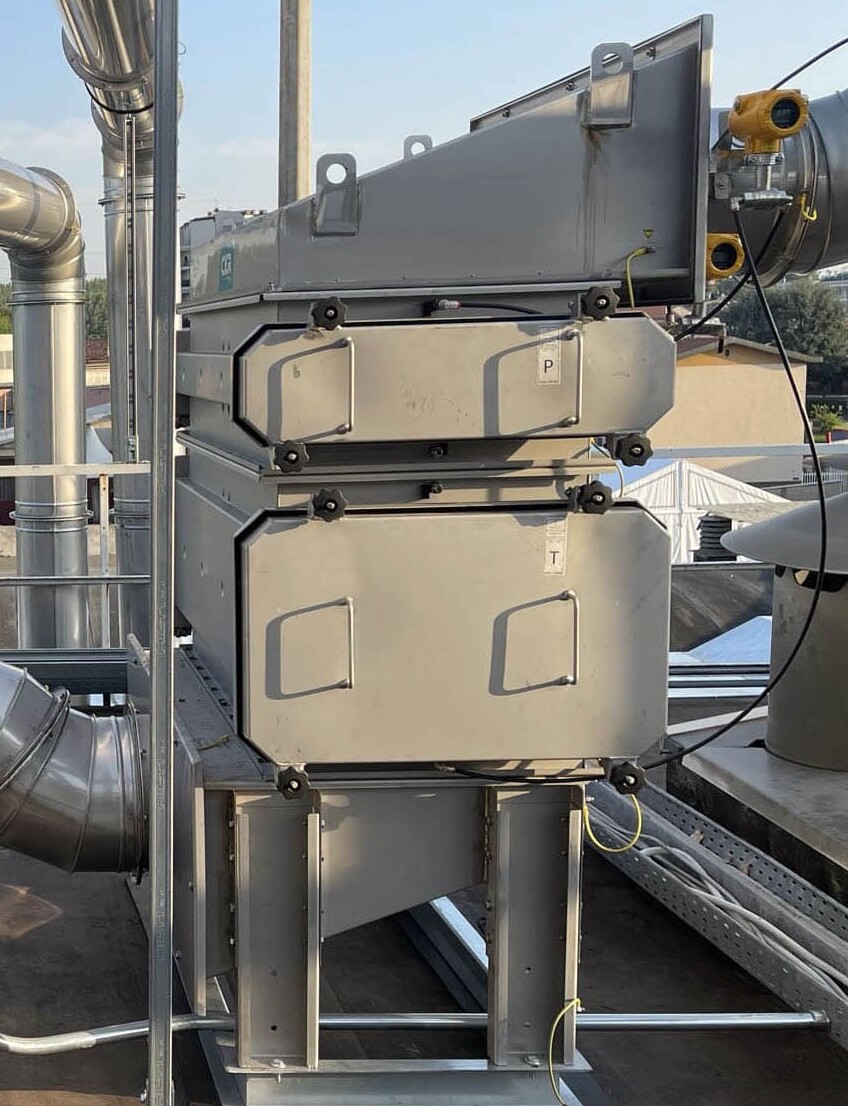
Once the dusts have been filtered in the canister, the airflow passes through the fan and is conveyed inside the Chemsorb® activated carbons purifier, placed under pressure for a better operation and located outside the warehouse. Concerning the purifier, it is essential to clarify that the VOCs emitted by the reactors also include the acetone, that belongs to the ketone group. The last, that has an intrinsic nature, can be subjected to auto ignition phenomena and can cause fires in the plants. The concentrations of acetone are low, but Tecnosida’s® specialists, as per request of the client, have arranged a fire prevention system which can promptly intervene if need be. The plant provides for the use of rate-of-rise detectors that have been added in the purifiers in order to detect any increase in temperature. In case of a sudden increase in temperature, the fire protection system starts the sprinkler which has been designed to pump water into the purifier and quickly extinguish the fire. Besides, any fire is also monitored through a CO detector.
ATEX equipments to prevent explosion risks
Chemsorb ®activated carbons purifiers used in this application are produced in ATEX version and have adsorption saturation monitoring systems. As we have already analysed, each activated carbon can adsorb specific percentages of Volatile Organic Compounds before their saturation. Such percentage changes according to the nature and type of the VOCs themselves. Therefore, the monitoring systems are essential to understand when it’s time to replace the activated carbons. The monitoring systems are located at the base of the purifiers and measure their initial weight and its variation through time. As the carbons adsorb the VOCs, the weight of the carbon itself increases until the weight reaches the saturation. The latter is detected and setted up by our specialists during the operations of the equipment.
After the filtration and purification through canisters and activated carbons purifiers, the airflow without pollutants is emitted in the atmosphere through specific chimneys with sampling nozzles in accordance with current regulations.
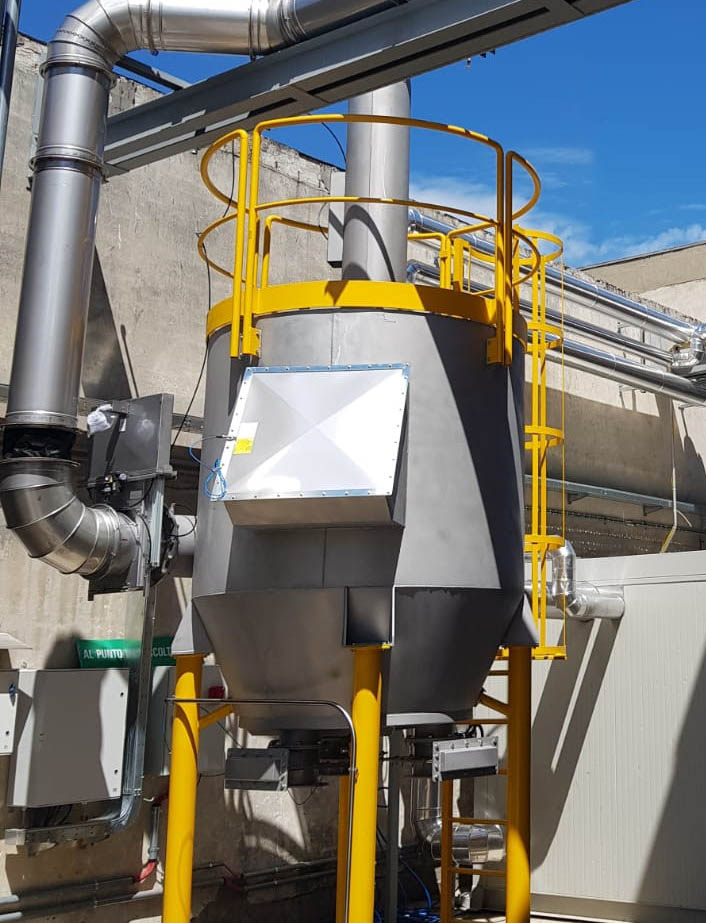
Energy management systems ATEX
The plants of this application have equipment and a series of elements that are able to guarantee management ease and energy savings. As a matter of fact, they are managed by remote control plc and have got:
- inverters for electric motors management and optimisation;
- pressure reducing valves for the control of the efficacy of purifiers and aspiration systems.
Conclusions for pharmaceutical industry pollution
The supply has been produced including the dismantling and disposal of the previous equipment with an all-inclusive similar system.
Besides, the supply includes user and maintenance manuals, CE and ATEX 2014/34/UE compliance certificates and all the digital documents of the project.
The client has been very satisfied of our work and have chosen to rely on us for the usual maintenance for the next 3 years and for other technological systems to be realized inside the plants.
